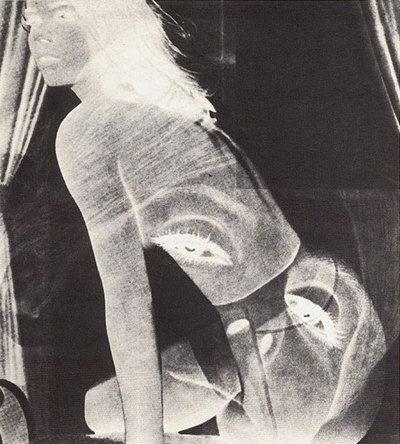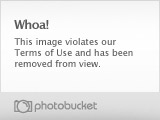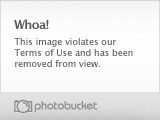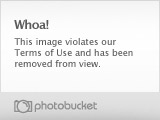
The cover of Robert Heinecken's 1968 portfolio, Are You Rea.
The works of the American artist Robert Heinecken all fall within the practice of Post-Modernism, and many can be classified as deconstructionist. Starting in the late 1960s, he “produced a series of projects that involved manipulating and recombining media imagery in order to understand how this imagery, chiefly photographic, works on and through our imaginations.”1 He first gained notoriety with his portfolio, Are You Rea, that was published in 1968. Comprised of twenty-five photograms that were exposed to reveal both sides of the source magazine pages at once, Are You Rea “reveals unexpected visual and textual interactions” through bizarre and thought-provoking juxtapositions.2 Seeing himself not as a photographer, but as a ‘paraphotographer’ since his work “stood ‘beside’ or ‘beyond’” traditional photography,3 Heineken was also called a ‘photographist’ by the art critic Arthur Dando in order to “describe the distinction between photographers who make ‘photography as art’ and those concerned with ‘photography in art’.”4

An image from Are You Rea, 1968.
‘Photographist’ could also be seen as describing his innovative combining of photography and illustration in some of his work. In the series, Cliché-verre/Vary Cliché (1978), Heinecken combined traditional photography with the cliché-verre process, which transfers a drawing on a transparent surface onto light-sensitive paper. Using lost pornographic negatives he collected from photography labs around Los Angeles, the maverick artist would then etch additional elements onto a transparent glass plate that had been coated with an opaque pale-coloured ground.5 He then printed sections of multiple negatives, along with the drawings, into a seemingly random grid, making some images larger than others to create the feeling of motion while also dissecting the overall action into small moments. The body is deconstructed—a face snapped back in ecstasy, a single breast, several inches of a thigh. While the figures in this series are nude and obviously partaking in some form of sexual interaction, his images lack any eroticism. The three images are called Autoeroticism, Fetishism, and Lesbianism, and they individually focus on these three types of sexual experience. Two years previously, he stated, “The most highly developed sensibility I have is sexual, as opposed to intellectual or emotional.”6 Intensely graphic, Heinecken highlights their arousal by toning the lips, of the mouth and vagina, and the nipples with red, yet he also draws on bras and knickers where there were previously none. He also adds in the pelvis in Fetishism, further deconstructing the body by removing the skin and tissue in sections yet leaving it ready for intimacy in other areas.

Robert Heinecken’s Cliché-verre/Vary Cliché: Autoeroticism, a photo lithograph from 1978.
Heineken’s work all through his career played with ideas of the photographic image, especially in the media. By removing these photographs from their original environment, he is asking the question: what do they say about our culture? Postmodernist in theme, the jagged dislocation of the body in this series is deconstructive yet is also reconstructive through the recombination of parts into a still passionate form. Robert Heinecken found the connection between pornography and fashion of deep interest, wondering why “women are attracted to female poses in fashion magazines that utilize the conventions of pornography”7 and he attempted to combat this through the use of demeaning found pornographic images of women in his work. While his use of this type of image led him to be ostracized by certain sections of the art world, this deconstruction of the female form into highly sellable and exploited parts can be found in both pornographic and fashion magazines today, leaving his work to be seen as a “simple, direct and unlockable doorway into the mass media image world—a world carefully constructed to disguise its inner workings and keep us outside of these workings—on the surface.”8

Robert Heinecken’s Cliché-verre/Vary Cliché: Fetishism, a photo lithograph from 1978.

. Robert Heinecken’s Cliché-verre/Vary Cliché: Lesbianism, a photo lithograph from 1978.